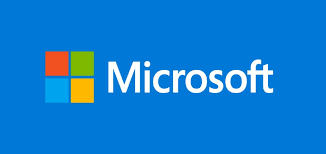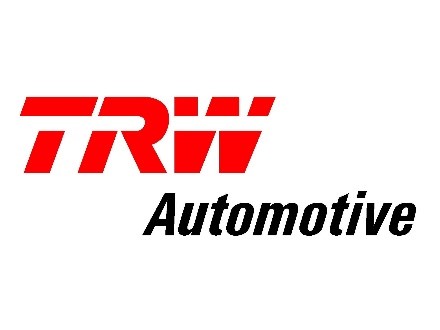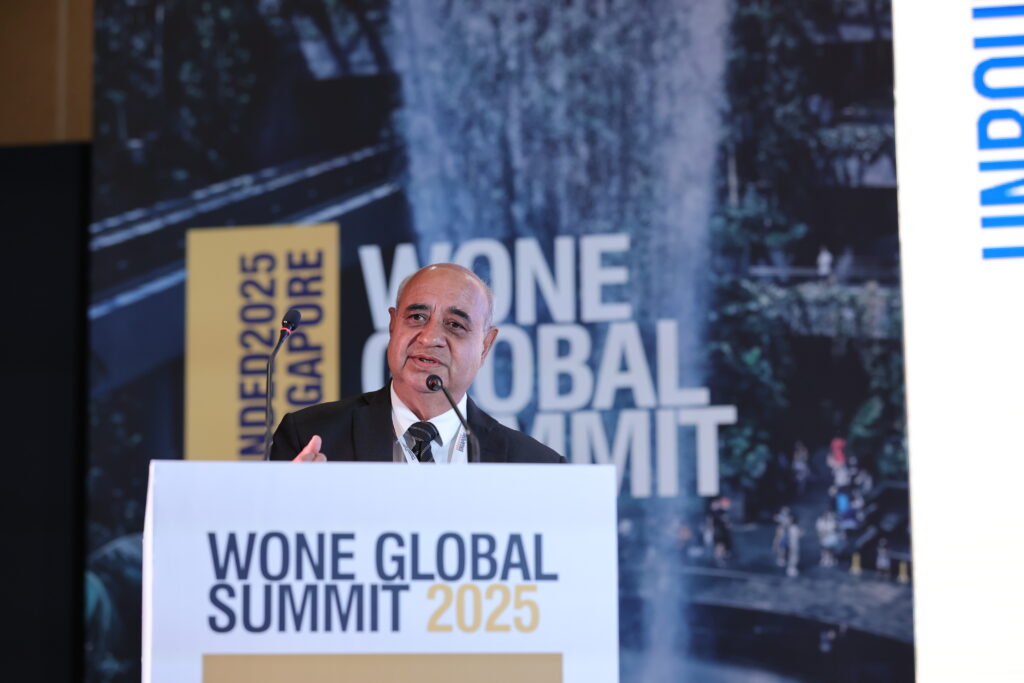
Amongst the Big Tech, perhaps the least talked about lately, has been Microsoft. A recent order passed by the Competition Commission of India (“Commission”) in March this year, closing a complaint filed against Microsoft for an alleged abuse of dominance in bundling Windows 10 OS with its own pre-installed antivirus software, Microsoft Defender, however, drew my attention once again to Microsoft and its interaction with the Antitrust laws Globally and in India as well. After brief research, assisted by my team[1] , I am happy to present this short compilation for my readers’ pleasure.
Tech giants all over the globe are facing the threat of the sword of Damocles – their own dominance. As a principle frequently recognized by the European Union (‘EU’), dominant firms have a ‘special responsibility’ not to distort competition. However, players like Google, Meta/WhatsApp, Amazon, Apple , Microsoft, etc. frequently abuse their position by engaging in exclusive deals, tie-in arrangements, and the like. Often, the most affected stakeholders are consumers, who are forced the accept unfair terms thrusted upon them. This severely impacts ‘consumer sovereignty’ – a term coined by Neil Averitt and Robert Lande. Consumer sovereignty exists at the satisfaction of two conditions – a)the existence and availability of a range of options available to consumers made possible through competition, and b)the ability of consumers to effectively choose amongst such options.
This blog traces antitrust enforcement against Microsoft, with special emphasis on Indian jurisprudence, highlighting how the big tech’s conduct impinges consumer sovereignty.
Antitrust Cases against Microsoft Globally
United States
The first competition-related case against Microsoft came into light after the United States (‘US’) District Court for Columbia released Findings of Fact in 1999. The 1990’s saw a phenomenal increase in the importance of web-browsers. Initially, Netscape’s Navigator, launched in 1994, dominated the market. However, Microsoft’s Internet Explorer (‘IE’), introduced in 1995, gained significant market share by 1998. The US inter alia alleged that Microsoft’s bundling of IE with Windows foreclosed competition for general search browsers[2] , violated the Sherman Antitrust Act, making it difficult for consumers to opt for alternate browsers. According to the Court, Microsoft prohibited Original Equipment Manufacturers (‘OEMs’) from removing IE or its icons from Windows, even if consumers preferred Navigator. It also prevented OEMs from promoting Navigator or modifying the Windows boot sequence to feature it. In fact, Microsoft threatened to discontinue Mac Office unless Apple made IE the default browser on Mac Operating System (‘OS’). Consequently, Navigator’s usage share dropped from over 80% in 1996 to around 50% by mid-1998, while IE’s rose from 5% to over 50%, largely due to Microsoft’s exclusionary tactics.
The refusal to offer a browser-less version of Windows forced consumers to accept IE, even if they preferred Navigator, and preventing OEMs from removing IE’s icons denied consumers the ability to exercise their choice. While the findings noted that Microsoft’s development of IE and its inclusion with Windows increased Internet familiarity, reduced browser costs (by forcing Netscape to offer Navigator for free), and improved browser quality through competition, they also emphasized that the benefits were overshadowed by Microsoft’s anticompetitive actions. Microsoft’s conduct was beyond innovation, focusing on protecting its monopoly at the expense of consumer preferences. Ultimately, the case ended with a settlement between Microsoft and the US government, and the former had to establish an internal antitrust technical committee and compliance program.
Even presently, the US Federal Trade Commission (‘FTC’) is conducting an investigation into Microsoft, examining allegations about potential abuse of its market power by the imposition of stringent licensing terms that prevent consumers from moving their data from Microsoft’s Azure cloud service to other third-party applications. The FTC is also examining whether Microsoft’s power in other industries gives it an unfair advantage in the Artificial Intelligence sector.
European Union
Similar cases have occurred in the EU. In 2004, the European Commission (‘EC’) imposed a fine of € 497 million on Microsoft. The EC concluded that Microsoft violated EU competition law by leveraging its near monopoly in the market for PC OS onto markets for group server OS and for media players. Microsoft abused its market power by tying its Windows Media Player (‘WMP’) with its OS. In Case T-201/04, the Court of First Instance laid down the following conditions to establish abusive tying: a)the tying and tied products are two separate products; b) the undertaking concerned is dominant in the market for the tying product; c)the undertaking concerned does not give a choice to customers to obtain the tying product without the tied product; d)the practice in question forecloses competition (para 842). Amongst the remedies, the EC mandated Microsoft to offer a version of its Windows OS without WMP to PC manufacturers. It stated that “as a result of the Commission’s remedy, the configuration of such bundles will reflect what consumers want, and not what Microsoft imposes.” In 2008, the EC imposed an additional penalty of € 899 million on Microsoft for non-compliance with its obligations under the 2004 decision.
In 2009, akin to the US v. Microsoft case, the EC had raised concerns regarding Microsoft tying its Windows OS with IE, in breach of Article 102 of theTreaty on the Functioning of the European Union. The EC adopted a decision rendering commitments offered by Microsoft legally binding. According to the same, Microsoft agreed to offer Windows users choice among different browsers, and made the option to turn off IE available to users and manufacturers. However, Microsoft was fined € 561 million by the EC in 2013 for its failure to comply with its commitments.
Three years later, a Russia-based antivirus vendor Kaspersky Lab filed a complaint in 2016 against Microsoft to the EC and the German Federal Cartel Office for allegedly favoring its own Windows Defender. According to the complainant, with the introduction of Windows 10, Microsoft started to created obstacles for competing manufacturers of antivirus software. This affected consumer interest by imposing a limitation on their right to choose, and lowering security standards. Although subsequently Kaspersky dropped its complaint, after Microsoft has agreed to implement changes allowing third-party antivirus companies to function in the same plane as Windows Defender.
Recently, Slack Technologies filed a complaint in 2020 alleging that Microsoft has illegally tied its Teams product into its dominant Office productivity suite, leading to its forced installation and blocking its removal. To avoid a fine, Microsoft committed to separate Teams from its Office products, and the EC is currently reviewing the commitments.
Antitrust Cases against Microsoft in India
The first competition-related case against Microsoft was filed in 2011, by a law firm Singhania and Partners LLP (‘Singhania’) which approached the Competition Commission of India (‘Commission’) under Section 19(1)(a) of the Competition Act, 2002 (‘Act’). The firm had intended to purchase Microsoft Operating System (‘OS’) and Microsoft Office 2007 for its office computers. In pursuance of the same, Singhania placed an order with Embee Software Private Ltd. for Microsoft Vista Business and Microsoft Office 2007, based on the latter’s proposal. However, Microsoft’s executive informed the firm that only volume licenses of the ordered products could be purchased and not the OEM licenses. Singhania learned that the price of the volume license was almost double the price quoted for OEM licenses. Singhania alleged that the “same product” was being sold for different prices and being coerced into buying volume license for double the price amounted to an unfair and excessive price in violation of Section 4(2)(a)(ii) of the Act. It further argued that the imposed restriction amounted to Microsoft artificially controlling the supply and pricing of its product in contravention of Section 3 of the Act. In its majority judgement, the Commission, vide its order dated 22.6.2011, however, dismissed the allegations as unfounded and ruled that the licenses were for “different product”, and sufficient evidence had not been produced by the Informant for corroborating a violation of Section 4. In the first appeal filed by Singhania , the erstwhile Competition Appellate Tribunal vide its order dated 09.10.2012, upheld the Commission’s findings, and Singhania’s second appeal against Microsoft was admitted for hearing by the Supreme Court on 28.1.2013 and is still pending for final hearing in the Supreme Court.
In a recent Order dated 03.03.2025, in Re: XYZ v. Microsoft Corporation, the Commission dealt with allegations against Microsoft for abusing its dominant position by bundling Windows 10 OS with its own pre-installed antivirus software, Microsoft Defender. The anonymous Informant contended that only Microsoft Defender as the default antivirus app was allowed to run on Windows devices. However, third-party apps could not be pre-activated, and the lack of ‘default’ status deprived them from access to features such as real-time scanning and automatic updates. According to the Informant, Microsoft enjoyed a monopoly in the market for licensable OS for desktops in India, as well as the market for computer security antivirus software for Windows OS in the country and has violated Section 4 of the Act.
Section 4 of the Act prohibits the abuse of dominant position. The Act defines it as a position of strength in the relevant market which enables the player to operate independently of the competitive forces in the market, and affect competition or consumers in the relevant market in its favor. Section 4(2) lists the types of conduct that are considered as abuse of dominant position, proving which requires an effects-based analysis, a dictum reiterated by the Supreme Court in a recent judgment in the Schott Glass case[3] , which I will report shortly.
Based on the averments of the Informant, the Commission considered the allegations in a four-fold approach.
Firstly, the Commission observed that users were free to install any third-party antivirus software of their choice, either through the Internet or via the Microsoft Store. They had the option to continue using Microsoft Defender or enabling a non-Microsoft service provider. Thus, in the absence of an element of compulsion or imposition, the Commission ruled out violation of Section 4(2)(a)(i) of the Act.
Secondly, Microsoft Defender’s inclusion had not inhibited the enhancement and development of multiple other antivirus software developers, that routinely introduce new features to provide better services to their customers. Further, the Commission noted that Microsoft neither extracted nor had access to technologically sensitive information of competing programs. In lieu of these facts, the Commission held that there was no prima facie violation of Section 4(2)(b)(ii), as allegations against Microsoft with respect to impediment to scientific or technical development were largely speculative and unaccompanied by a relevant theory of harm.
Thirdly, the Commission deliberated upon whether Microsoft’s conduct of bundling Microsoft Defender with Windows OS violated Section 4(2)(d). Relying upon Harshita Chawla v. WhatsApp Inc. & Ors., the Commission iterated an identical four-part test as applied by the EU in Case T-201/04. Considering that Microsoft Defender, along with its OS, are two different products, the Commission delineated different relevant markets – the market for licensable OS for desktops/laptops in India (tying product market), and the market for desktop/laptop security (antivirus) software for Windows OS in India (tied product market). Therefore, the first prong of the test was fulfilled. The Commission also found Microsoft to be prima facie dominant in the market for licensable OS for desktops/laptops in India, hence satisfying the second prong. However, since users had the choice to opt for solutions from alternative third-party providers, and the fact that multiple prominent competitors continue to operate in the market without significant barriers to entry or exclusion despite Microsoft Defender’s presence, the third and fourth prongs of the tying-test were not established.
Tying and Bundling
Interestingly, the Commission in Sonam Sharma v. Apple Inc. USA & Ors., had observed that there is a subtle difference between tying and bundling (para 68). The term ‘tying’ was employed when the proportion in which the two products purchased by the consumer were not specified at the time of purchase, whereas products were only sold in fixed proportion in cases of ‘bundling’. Tying involves selling product ‘A’ only if it is accompanied by the purchase of another separate product ‘B’, meaning that while one can purchase ‘B’ freely in the market, one has to compulsorily purchase ‘B’ to get ‘A’; bundling means that both products are sold as a bundled package at a particular price in fixed proportion. Even in Harshita Chawla’s case, where it was alleged by the Informant that pre-installation of WhatsApp Pay on its users’ smartphones embedded within the WhatsApp messenger app amounts to ‘bundling’ within the ambit of Section 4(2)(d), the Commission clarified that the nature of allegation was more akin to ‘tying’ (para 92), and only then proceeded to apply the four-pronged tying-test. However, in the instant case, while examining the allegation of bundling Microsoft Defender with Windows OS against Section 4(2)(d), the Commission applied the four-pronged test related to tying without a similar clarification. The distinction between them is important, as economic literature suggests there are pro-competitive rationales for product-tying, such as assembly benefits, quality improvement, etc.
Lastly, to sustain an allegation of violation of Section 4(2)(e) of the Act, there must be evidence of an active restriction or conditionality imposed. The Commission observed that since no mandatory conditions had been imposed by Microsoft, consumer preference is preserved in effect, and hence there was no violation.
Conclusion
The saga of antitrust enforcement against Microsoft, spanning continents and decades, underscores a fundamental principle: the preservation of consumer choice is the cornerstone of fair competition. From the bundling of Internet Explorer and Windows Media Player to the integration of Microsoft Defender and Teams, each case reveals a persistent tension between innovation and market dominance. While Microsoft’s actions have often driven technological advancements, they have at times, curtailed the very sovereignty of consumers—limiting their ability to freely choose among diverse options. Antitrust authorities, whether in the US, EU, or India, have consistently sought to restore this balance, ensuring that competition thrives, and consumer interest is protected. As technology continues to evolve, these lessons remind us that the pursuit of progress must never come at the expense of the consumer’s right to choose. The sword of Damocles may loom over tech giants, but it is the vigilant protection of consumer interest that keeps markets dynamic, innovative, and truly free.
Comment: The orders passed by the Commission in India, closing both cases of alleged abuse of dominance against Microsoft , firstly , in 2011 and recently in March 2025 are apparently at variance with the trend of orders passed against Microsoft by other Competition authorities /Antitrust regulators in other foreign jurisdictions. While the first order of 2011 is under challenge in the Supreme Court, it is not clear whether the anonymous Informant in the recent case will challenge the order in appeal before the NCLAT or not. In my view, the order is worth challenging to evolve jurisprudence on the specific issue of pre-activated and “default” features provided by the Big Tech companies like Microsoft, which apparently seem to affect competition. Ironically, on similar allegations against WhatsApp, the Commission found such default features, with “take it or leave it” condition that precludes an opt out option for users , to be anti-competitive and exclusionary conduct abusive of dominant positions in the relevant markets and imposed penalties .
#Microsoft #Abuseofdominance
[1] My Intern, Mustafa Topiwala, a Second year BA LLB student in RGNLU, Punjab, deserves a credit for this research.
[2] Including likes of Google, an emerging search engine at that time.
[3] Competition Commission of India Vs, Schott Glass India Pvt Ltd.& ANR. -Civil Appeal No. 5843/2014 & Kapoor Glass India Pvt. Ltd. Vs. Schott Glass India Pvt. Ltd. -Civil Appeal No.9998/2014 -Common Judgment dated 13.5.2025.







